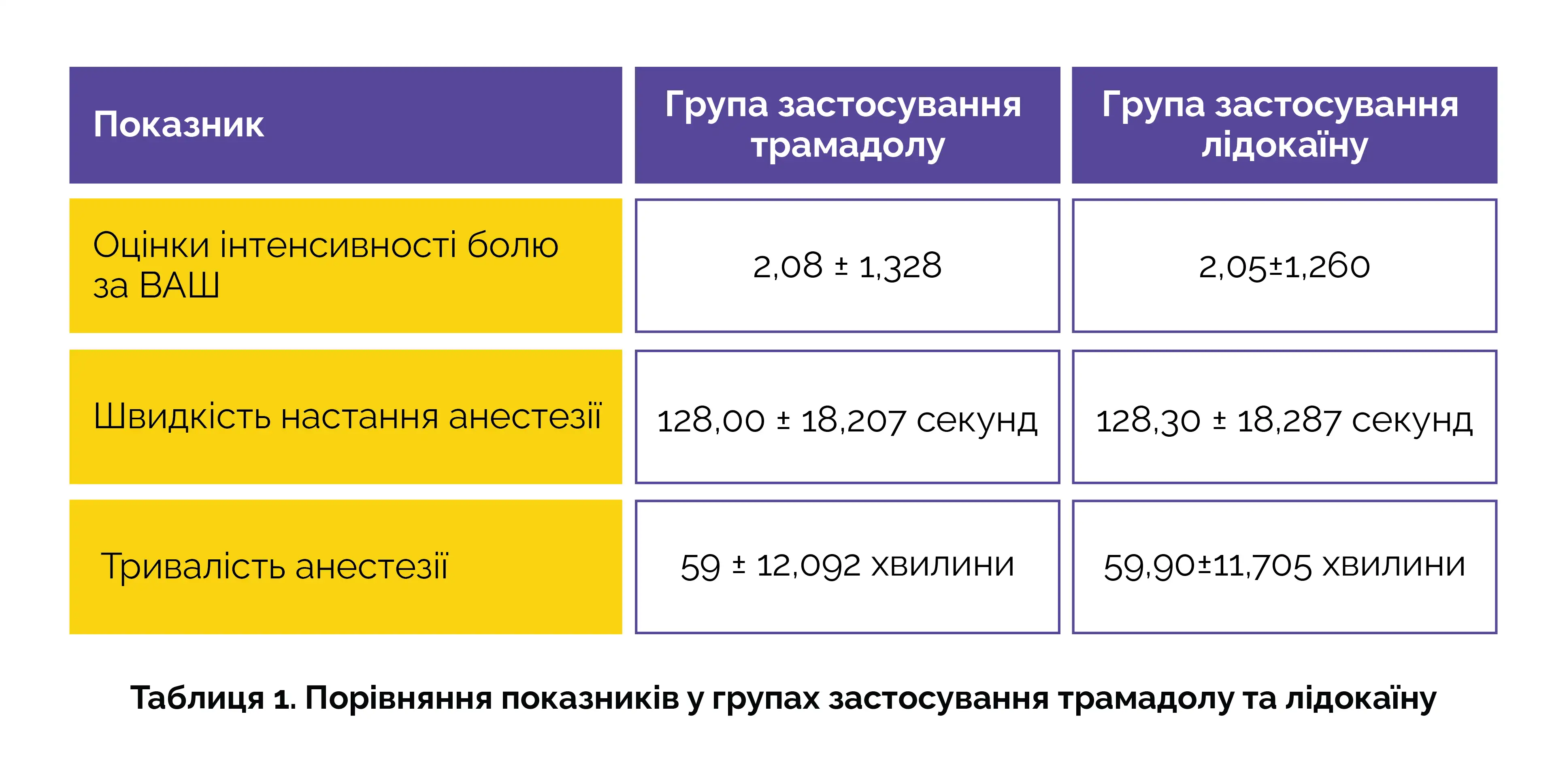Змінити пароль!
Скинути пароль!


У рандомізованому контрольованому дослідженні при застосуванні трамадолу гідрохлориду ступінь полегшення болю, а також швидкість настання та тривалість анестезії у пацієнтів, які проходять процедури дентальної імплантації, були порівняні з відповідними показниками при застосуванні лідокаїну гідрохлориду. Мета дослідження полягала в оцінці застосування трамадолу як потенційної альтернативи лідокаїну при процедурах відновлення зубів. У цьому подвійному сліпому дослідженні з поділом ротової порожнини взяли участь 40 пацієнтів (середній вік 39,35 року, 62,5 % чоловіків), яким проводили імплантацію зубів верхньої щелепи.
Включеним до дослідження добровольцям вводили 5% розчин трамадолу гідрохлориду у поєднанні з адреналіном або 2% розчин лідокаїну гідрохлориду у поєднанні з адреналіном шляхом супраперіостальної інфільтрації. Дослідники реєстрували оцінки інтенсивності болю за візуальною аналоговою шкалою (ВАШ), швидкість настання та тривалість анестезії, а також частоту розвитку небажаних явищ. Суттєвих відмінностей в оцінках за ВАШ, швидкості настання та тривалості анестезії виявлено не було (див. таблицю 1).

Нудота була зареєстрована у 2 пацієнтів у групі застосування трамадолу та у 1 пацієнта у групі застосування лідокаїну. Таким чином, застосування трамадолу є перспективним варіантом місцевої анестезії, особливо для пацієнтів, які мають протипоказання до лідокаїну. Для підтвердження можливості ширшого застосування та безпеки препарату в стоматологічній практиці рекомендується проведення подальших досліджень.
немаємарки
Assessing Tramadol Hydrochloride as an Alternative to Lignocaine Hydrochloride in Dental Implant Procedures: A Randomized Trial
Akshita N. Parlawar і співавт.
Коментарі (0)